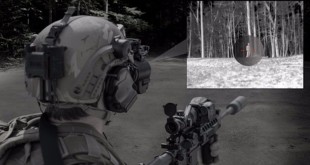Precision medicine is targeting the right medicine for the right patient at the right time. The goal of personalized medicine is to provide more effective and targeted treatment options that are specific to each patient’s needs, rather than relying on a one-size-fits-all approach. Personalized medicine, also known as precision medicine …
Read More »Navigating the Metaverse: Unveiling Terrorist Threats and Challenges
Introduction The concept of the metaverse has captured the collective imagination of tech enthusiasts, futurists, and even the general public. This virtual realm, a convergence of augmented and virtual reality, promises a digital utopia where we can work, play, socialize, and create, all within a boundless digital landscape. However, amid …
Read More »Quantum Mechanical Oscillator Advancements: Revolutionizing Quantum Technology
Introduction Quantum technology, with its promise of revolutionary advances, has been pushing the boundaries of science and industry. Within this realm, one of the most intriguing developments in recent years is the progress made in the field of Quantum Mechanical Oscillators. These microscopic systems, once seen as an intricate challenge, …
Read More »Unveiling Hidden Targets: How Advanced Thermal Imaging Technologies Conquer Darkness, Fog, and Smoke
In a world predominantly reliant on vision, we are often limited by our ability to see in adverse conditions. In the absence of daylight, in dense fog, or within a veil of smoke, our vision is compromised. In a world where visibility is essential for safety and security, the limitations of …
Read More »Navigating the Cosmos: AI based Adaptive Control Technologies for Space Exploration and Colonization
Introduction The final frontier, as space is often called, has always captivated the human imagination. Over the past few decades, we’ve made significant strides in space exploration, from landing on the moon to sending rovers to Mars. But as we set our sights on more ambitious goals, such as lunar …
Read More »Titanium: The Strategic Wonder Metal Powering Aerospace, Defense, and Beyond
Introduction: Titanium, a fascinating metal with exceptional properties, has emerged as a strategic material revolutionizing key industries, from aerospace and defense to marine exploration and beyond. Its unique combination of strength, lightweight, and corrosion resistance has made it an irreplaceable component in critical applications, paving the way for innovative advancements …
Read More »Unlocking the Potential of Photonic Integrated Circuit (PIC) Testing: Bridging the Gap to Mass Manufacturing
The world of integrated photonics technology is on the brink of a revolution, promising smaller, faster, and more efficient devices for a range of applications. Photonic Integrated Circuits (PICs) are at the forefront of technological innovation, poised to transform diverse industries ranging from data communications to biomedical applications. However, the transition …
Read More »The Final Frontier of Healthcare: Space Medicine and Telemedicine for Space Exploration and Colonization
Introduction As humanity’s ambitions extend beyond Earth’s boundaries, we are faced with the exhilarating challenge of exploring and colonizing distant celestial bodies. Space exploration has always been synonymous with innovation, pushing the boundaries of human knowledge and capabilities. The future of space exploration and colonization is bright, but it is …
Read More »The Role of Space Internet in Interplanetary Space exploration and colonization
Introduction As humanity sets its sights on exploring and eventually colonizing other celestial bodies, the importance of a reliable and robust communication infrastructure in space cannot be overstated. Enter space internet, a cutting-edge technology that is set to play a pivotal role in enabling interplanetary space exploration and colonization. In …
Read More »Space Solar Power: Paving the Way for Planetary Exploration and Asteroid Missions
As we delve into the realm of space exploration, our thirst for understanding the cosmos grows stronger. Among the countless questions and challenges we face, one concept has emerged as a potential game-changer—Space Solar Power (SSP). While we’ve explored the potential of SSP for lunar and asteroid mining, it’s crucial …
Read More » International Defense Security & Technology Your trusted Source for News, Research and Analysis
International Defense Security & Technology Your trusted Source for News, Research and Analysis

